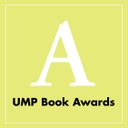University Presses Lead the Way for Publisher-Based Ebook Systems
FOR IMMEDIATE RELEASE
The unique role of the university press in forming publisher-based e-book systems
Press Release Date: 2011-10-10T00:00:00
In 2010, Michael Jon Jensen, director of strategic web communications at the National Academies and National Academies Press, wrote that “today, university presses are a key part of a scholarly communications enterprise that performs a key social service, to help civilization gain access to the work of true specialists, the people who have spent more than Gladwell’s ten thousand hours developing true expertise in a field. Not pundits, not famous talking heads, but scholars and experts. I expect the same to be true tomorrow.”
However, he cautioned that “if university presses are to continue to fulfill that fundamental mission, we will need to rethink our roles and partnerships—in preparation for not only a radically universal digital environment of knowledge ubiquity, but (even if I’m only half right) a radically disrupted economy and ecosystem.” In the past year, university presses have made major, aggressive strides into ebook adoption that might not only answer this challenge but provide a useful model for the commercial sector.
...
Ready for Rapid Growth
NYU Press’ strategy has been to “publish ebooks simultaneously with print for all markets and channels,” notes Maikowski. “We also saw our ebooks sales grow almost 240% this year, so we see where the market is going.”
The multiplicity of developing systems and platforms is a positive sign of both the commitment and commercial viability of ebooks from university presses. “Most university presses continue to see solid book sales,” notes University of Minnesota Press director Doug Armato. “Minnesota has had two record sales years in a row for our book program. But as books are networked through such projects as MUSE/UPCC, Books at JSTOR, and Oxford Scholarship Online, I think the ease of access and broadened discovery will drive a lot of usage online.”
“I think there are going to be enormous, tectonic shifts with the launch of all these programs in the next twelve months—I'd be surprised and disappointed if the scholarly publishing earth doesn’t shake as publishers, libraries, scholars, and students assess all these options,” believes Armato. These projects “will help to demonstrate university press’ collective value and expertise and, even more importantly, demonstrate the vitality of humanities and social science scholarship itself...at the end of the day, as long as there are scholars who think of themselves as authors, university presses have a future.”



